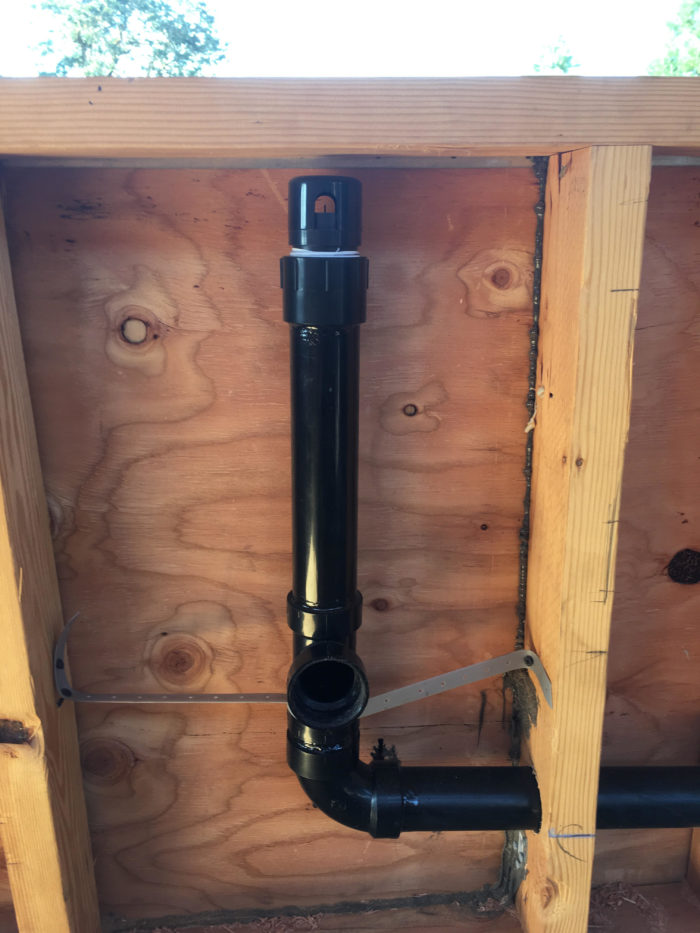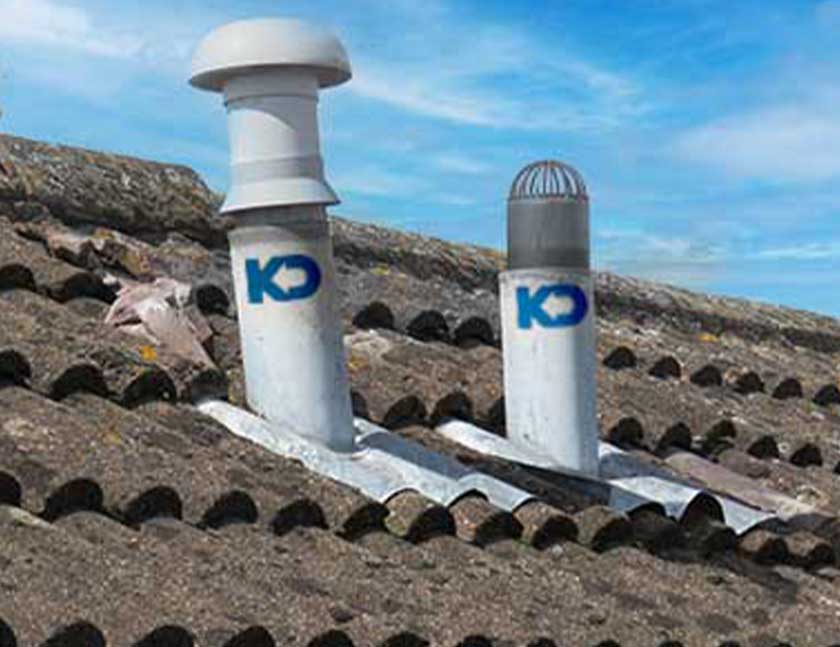The Significance of Ventilation in Building Plumbing Systems
The Significance of Ventilation in Building Plumbing Systems
Blog Article
This article down below about The Upsides of Proper Ventilation in Plumbing Design is particularly intriguing. You should check it out.

Appropriate ventilation in plumbing systems is commonly ignored, yet it is important for maintaining the performance and safety of your home's plumbing. Ventilation assists manage air pressure, avoid the buildup of harmful gases, and make sure the efficient removal of waste. In this overview, we will certainly check out the importance of proper plumbing air flow, exactly how it functions, and the benefits it brings to your plumbing system.
Understanding Air Flow in Pipes
Air flow in pipes refers to the network of pipelines that enable air to flow with the drainage system. These vents offer numerous functions, including managing air pressure within the pipes, protecting against drain gases from entering the home, and aiding in the smooth flow of wastewater.
Exactly How Ventilation Functions in Pipes Systems
Atmospheric Pressure Policy
Proper ventilation keeps well balanced atmospheric pressure within the pipes system. When water streams with pipelines, it displaces air. Without adequate air flow, this displacement can produce unfavorable stress, resulting in slow drains or siphoning of water from traps, which can create undesirable smells to permeate right into the home.
Preventing Drain Gas Accumulation
One of one of the most crucial features of plumbing vents is to avoid sewer gases, such as methane and hydrogen sulfide, from gathering within the home. These gases can pose major health dangers and are highly flammable. Vent pipes permit these gases to escape securely outdoors.
Assisting in Waste Elimination
Air flow helps in the effective removal of wastewater by avoiding airlocks in the drain system. When air can move openly through the vents, it allows water and waste to stream smoothly through the pipes, lowering the risk of obstructions and back-ups.
Types of Pipes Vents
Key Stack Vent
The primary stack vent, additionally referred to as the vent stack, is the key air vent in a plumbing system. It prolongs from the main drainpipe line up through the roof, enabling gases to escape and fresh air to get in the system.
Branch Vent
Branch vents connect to the major stack air vent and offer private fixtures, such as sinks, toilets, and showers. These vents ensure that each fixture has adequate ventilation to work effectively.
Air Admittance Shutoff (AAV).
An Air Admission Valve (AAV) is a one-way valve that enables air to enter the pipes system without the requirement for a standard vent pipe extending through the roofing. AAVs are frequently used in restorations or locations where installing a conventional air vent is unwise.
Indicators of Poor Air Flow in Pipes.
Slow Draining Fixtures.
If your sinks, bathtubs, or commodes are draining pipes gradually, maybe an indicator of poor air flow. Poor air circulation can produce a vacuum result, making it tough for water to drain correctly.
Gurgling Sounds.
Gurgling sounds coming from drains pipes are frequently a result of air being sucked via water catches as a result of adverse pressure in the pipes. This is a clear indication of not enough ventilation.
Undesirable Odors.
Sewage system smells inside your home are a red flag that your pipes system is not properly aerated. This can indicate that sewer gases are not being properly aired vent outside, resulting in potentially harmful problems.
Typical Air Flow Mistakes.
Insufficient Vent Sizing.
Making use of small vent pipes can bring about poor air flow and pressure discrepancies in the system. It's necessary to utilize vents that fulfill the details needs of your pipes system.
Improper Vent Positioning.
Positioning vents too far from the fixtures they serve can decrease their effectiveness. Proper placement makes certain that air can stream freely and successfully with the system.
Ignoring Code Needs.
Building ordinance offer particular guidelines for plumbing air flow. Neglecting these codes can result in a system that falls short to work properly and may result in costly fixings or health hazards.
Benefits of Appropriate Air Flow.
Boosted System Efficiency.
Appropriately aerated pipes systems operate much more effectively, with fewer blockages, faster draining, and less stress on the pipes. This effectiveness prolongs the life expectancy of the plumbing system.
Improved Air Quality.
By avoiding sewer gases from entering your home, correct air flow contributes to better interior air high quality, making your living atmosphere healthier and more comfy.
Stopping Water Damage.
Ample air flow aids avoid water from being siphoned out of catches, which can lead to sewage system gases entering the home and triggering water damage gradually.
Steps to Ensure Correct Air Flow.
Consulting Pipes Codes.
Always seek advice from neighborhood plumbing codes when making or modifying your pipes system. These codes offer the essential guidelines for proper airing vent and guarantee your system fulfills safety requirements.
Routine Examination and Maintenance.
Regular evaluations can help determine prospective ventilation issues before they become significant troubles. Upkeep jobs, such as cleaning up vent pipes and checking for obstructions, are vital for keeping the system in good working order.
Specialist Setup.
For new setups or significant modifications, it's wise to employ a professional plumbing professional. They have the competence to ensure the ventilation system is correctly designed and set up according to code.
Conclusion.
Appropriate air flow is an important part of any kind of pipes system, ensuring that it operates effectively and safely. By understanding the importance of air flow, identifying the signs of poor ventilation, and taking steps to keep your system, you can avoid pricey problems and protect your home's air high quality.
Understanding the Role of Your Plumbing Vents in the Drainage System
The plumbing system in your home is more than just the kitchen sink, toilet, and bathroom. Some problems that arise within home plumbing are hard to detect because homeowners may not understand potential causes.
One part of the plumbing system that could cause you endless problems is the venting. The drain lines that run through your home and drain wastewater need proper venting to function properly. Faulty plumbing vents can lead to several problems that require the expertise of a plumber to check them out. Before finding experienced plumbing services, there are a few things to learn about plumbing vents.
Why vents are vital
Vents in the plumbing system lead to an outside area such as the roof or the back. The function of these vents is to keep sewer gases away from the drain pipes. They also establish seals in the drainage pipes that prevent the sucking back of waste gases into the home. Venting in the plumbing system also allows oxygen to get into the drainage system, which is an essential component in the breakdown of waste matter. The vents also ensure that the air pressure within the drainage system remains balanced, facilitating the flow of wastewater.
Possible problems
When the plumbing vents are problematic, one of the consequences is imbalanced water levels in the toilet. If you notice that the levels in the toilet bowl rise and fall all the time, then there may be something wrong with the vents.
Another issue is air bubble formation within the toilet. In most cases like these, the drain pipes are not receiving enough air. Lack of air pressure equalization is what leads to water flow problems. If you come across such issues in your home, make sure you call professional plumbers, such as the ones from Perfection Plumbing & Drain Cleaning Ltd.
Potential causes
Several scenarios can lead to some of the plumbing problems that homeowners suffer because of venting. One such scenario is the use of incorrectly sized vents. Usually, vents are the same size as the drain line to facilitate proper venting. Vents that are too small will lead to some plumbing issues. Another potential cause is fixtures that are not close enough to the vents. In this scenario, air forces itself through the traps of other fixtures, leading to gurgling sounds from toilets and sinks.
Most of these problems also happen with clogged vents. Tree leaves and debris can cause clogging when they make their way down a vent. Unclogging plumbing vents is a service that you can entrust to Saskatoon plumbers. They will know how to snake down vents and remove clogging stuck in fixtures.

Hopefully you liked our excerpt about What Is a Plumbing Vent and Why Is It Important. Thanks for finding the time to read our blog. If you enjoyed our post kindly make sure you remember to share it. I am grateful for being here. Revisit us soon.
Book 24/7 Report this page